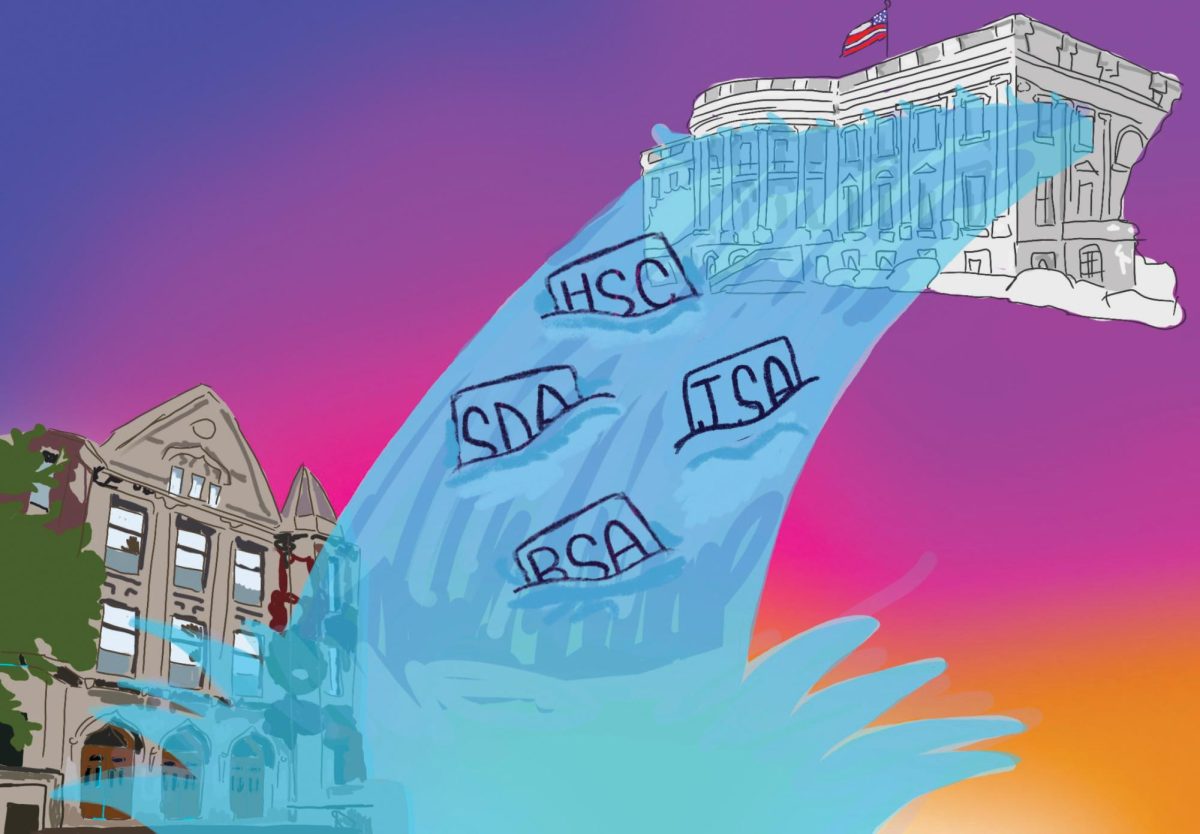Loan relief doesn’t affect the root cause of student debt
Midway Staff
Assistant Editor Ethan Swinger argues that Joe Biden’s student loan debt relief is a step in the right direction, but by no means a solution.
September 23, 2022
The Biden administration announced a student loan relief plan on Aug. 24, which would significantly reduce debts for tens of millions of Americans. The Department of Education will cancel up to $10,000 in debt and another $10,000 for students who received a Pell Grant, a federal financial aid payment to students from low-income families. Students with an individual income greater than $125,000, and $250,000 for married couples, are not eligible to receive aid.
The Department of Education estimates that 44% of eligible borrowers are between 26 and 39, while more than a third are older than 40. The targeted demographic given loan relief are middle-class Americans making between $51,000 and $82,000 a year.
While the Biden administration’s student loan debt relief plan is a positive step in easing the financial burden of those who need it, it fails to address the root causes of this debt — the rising expense of college education — and also minimizes aid to students currently in college or those about to apply, allowing this issue to perpetuate.
Loan relief actions are a necessity as the amount of total federal student loan debt of $1.6 trillion continues to spiral. The average undergraduate student graduates nearly $25,000 in debt. The current pandemic pause on federal student loan repayment has been extended several times and is set to expire Dec. 31.
Given the monumental amount of student debt, Biden’s loan relief plan, while certainly helpful in alleviating financial burden, is in no way a solution. The plan is a one-time executive order.
The rising cost of colleges nationwide remains the root cause of student debt and finding ways to lower its cost is what will help the student debt issue for all borrowers.
Adjusting for inflation, the average cost of a four-year university has roughly tripled since 1980. Federal aid has not kept up with rising costs. Students from working families who qualify for financial aid only have a fraction of their degree paid due to rising costs. In the past, almost 80% of a four-year public college degree was covered under a Pell Grant, but only a third, up to $6,895, is covered today.
Finally, to reduce the rising cost of colleges and the burden of debt of millions of Americans, colleges could be incentivized for low tuition costs, such as by being given aid to do so. Increasing the value or quantity of Pell Grants given can also help lower debt for students. Additional student debt forgiveness can encourage tuition increases because students borrow more money on the chance they will not have to repay it.
Loan relief needs to target the root causes of rising college prices and help current college students, thus reducing the future crushing debts students take out.





























































Roy • Mar 1, 2023 at 5:19 am
absolutely correct. Tuitions are outrageous. inflation is one cause not the only cause. let’s be more transparent on ALL of the reasons eg salaries, school supply costs etc.